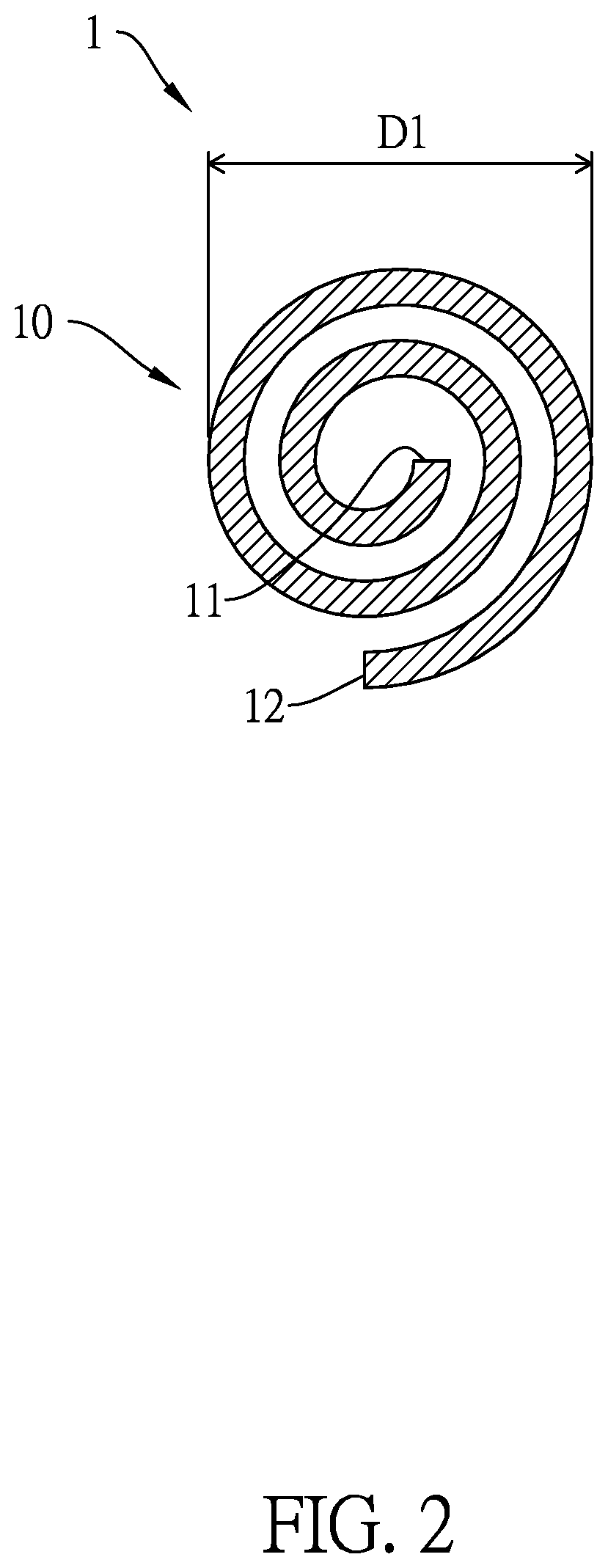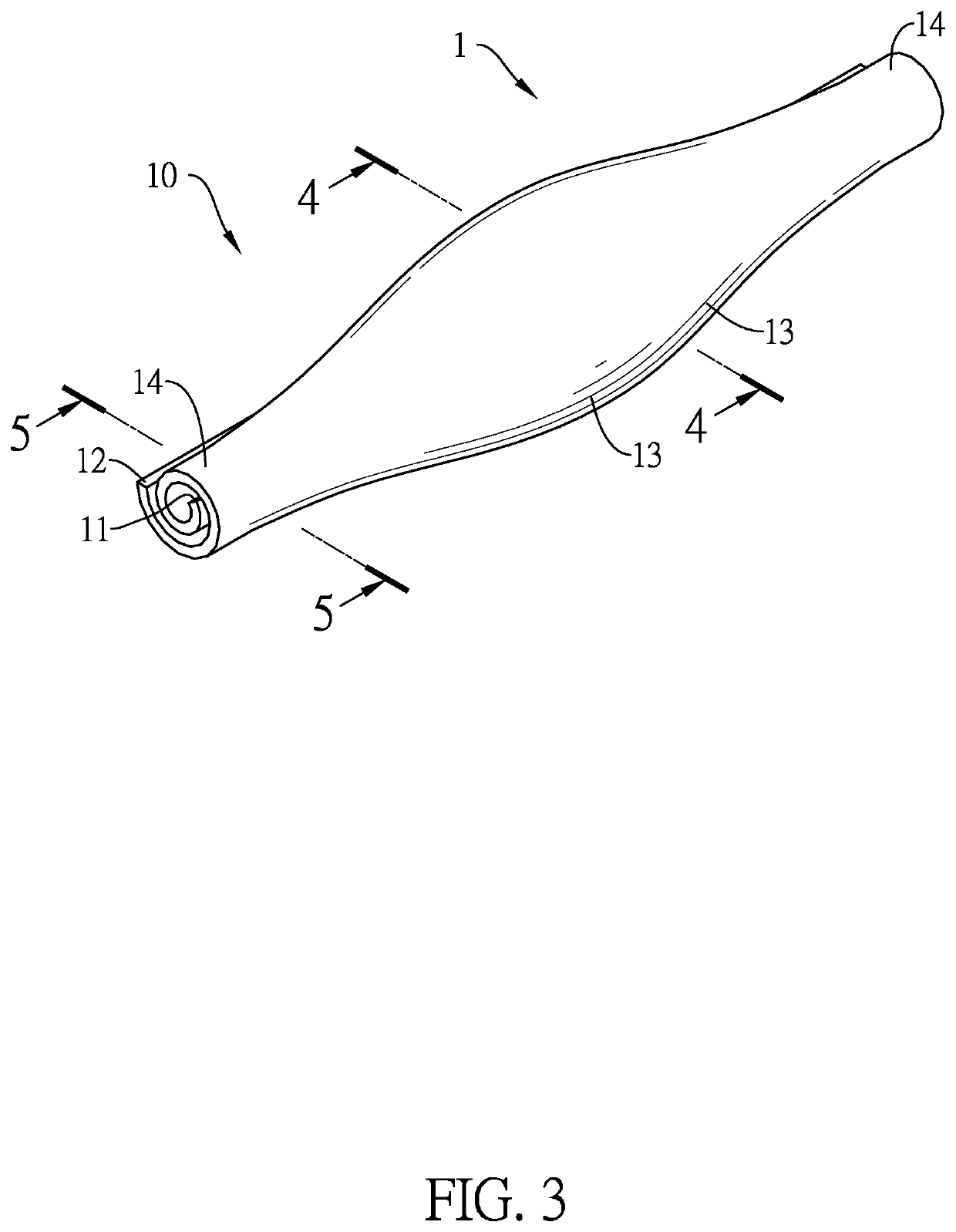Method for manufacturing rolled retraction cord
a technology of retraction cord and manufacturing method, which is applied in the field of rolled retraction cord manufacturing, can solve the problems of limited deformability, gingival bleeding, and often occurring gingival bleeding, and achieve the effects of increasing plasticity, easy torn or shredded, and poor deformability
- Summary
- Abstract
- Description
- Claims
- Application Information
AI Technical Summary
Benefits of technology
Problems solved by technology
Method used
Image
Examples
Embodiment Construction
[0033]Before the present invention is described in greater detail with reference to the accompanying embodiments, it should be noted herein that like elements are denoted by the same reference numerals throughout the present invention.
[0034]As shown in FIGS. 1A and 1B, the first preferred embodiment of the rolled retraction cord 1 has flexibility and plasticity. The rolled retraction cord 1 is made of a sheet 10 rolled into a non-firm multilayer strip. The sheet 10 having a smooth surface comprises a first side edge 11 and a second side edge 12, and the first side edge 11 and the second side edge 12 are opposite and parallel to each other. In particular, the rolled retraction cord 1 is formed by rolling the first side edge 11 of the sheet 1 toward the second side edge 12 of the sheet 10, wherein the thickness of the sheet 10 ranges from 0.05 mm to 0.15 mm, and the length L1 from the first side edge 11 to the second side edge 12 ranges from 2 mm to 15 mm. In this embodiment, the mate...
PUM
| Property | Measurement | Unit |
|---|---|---|
| length L1 | aaaaa | aaaaa |
| length L1 | aaaaa | aaaaa |
| outer diameter D1 | aaaaa | aaaaa |
Abstract
Description
Claims
Application Information
 Login to View More
Login to View More - R&D
- Intellectual Property
- Life Sciences
- Materials
- Tech Scout
- Unparalleled Data Quality
- Higher Quality Content
- 60% Fewer Hallucinations
Browse by: Latest US Patents, China's latest patents, Technical Efficacy Thesaurus, Application Domain, Technology Topic, Popular Technical Reports.
© 2025 PatSnap. All rights reserved.Legal|Privacy policy|Modern Slavery Act Transparency Statement|Sitemap|About US| Contact US: help@patsnap.com



